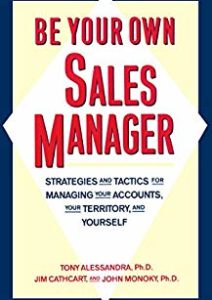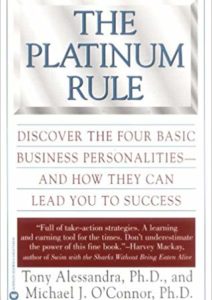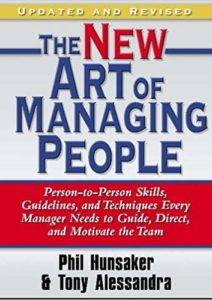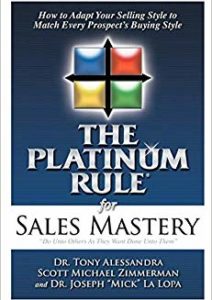I believe there are two ways to negotiate: manipulatively and collaboratively. You could call it “win‑win” versus “win‑lose.”
Manipulative negotiating sees the participants as adversaries. Tactics include exerting power, using subterfuge and hiding your own nonverbal communications. There is a lot of mistrust, tension, and suspicion. The manipulative negotiator’s goal is to win. There are usually hard feelings on somebody’s part–typically the loser. The focus is on single answers and positions – “This is what I want!” It’s hardball negotiating. If you are making a one-time negotiation and you’re not going to see the people anymore, perhaps you can get away with it, but it’s not a healthy business practice.
The collaborative negotiator sees the participants as problem solvers looking for a mutually satisfactory solution. It’s a process that both parties can walk away from and feel comfortable that neither one was “had.” It relies on trust, openness, credibility and honesty. The goal is a wise and fair outcome for all parties. The focus is on multiple options. There are many ways to satisfy both parties’ needs, not just one.
Everybody should have a negotiating philosophy. Many people enter important negotiations without having a clear idea of what they would like to accomplish. A negotiating philosophy could be that you want to go for low price; or you may be willing to pay going rates, but you want to get as many additional amenities as possible. Here’s my personal negotiating philosophy: “When two people want to do business with each other, they will not let the details stand in the way. However, when two people do not want to do business with each other, the details will rarely pull the deal together.” If somebody wants to do business with you he is more apt to compromise and less apt to seek unreasonable compromises from you.
Here are several specific actions you can take during Collaborative Negotiating.
- Develop a negotiation strategy that clearly spells out what you will and won’t do during the negotiations.
- Collect as much background information as possible beforehand on the people and companies you’ll be facing in the negotiation process.
- Evaluate your competitive exposure. What are the odds that another supplier or meeting planner will come up with a better offer than the one you are making? This information can help establish your maximums and minimums.
- Prepare and role-play with colleagues prior to your initial negotiation meeting. It provides you with confidence in facing questions and situations you are now prepared to handle.
- Make sure that your clothing, grooming, materials, handouts, preparation and depth of knowledge project credibility, authority and strength. This is where you start creating the “confidence” factor because people do “judge books by their cover.” People will not negotiate seriously with you if they don’t believe you have the power and credibility to make decisions.
- Tailor your pace and presentation to the individual differences of the other people. People who are very relationship oriented and low in assertiveness are called Relaters and are primarily interested in relationships. Those who are “people” oriented and highly assertive are called Socializers and are interested in recognition. Task oriented, highly assertive people are Directors who are concerned about results. Less assertive, task oriented people are Thinkers who like structure. Be flexible in your “approach” with the differences in people. It will reduce relationship tension and subsequently increase interpersonal trust, credibility, cooperation and productivity.
- Take time to study all dimensions of the other person’s current situation. Ask questions and listen with your ears and eyes. Try to determine the end results the other person is attempting to accomplish, not solely his position or demands. However, it would be important to find out the decision‑making criteria (must haves vs. should haves vs. nice to haves) of the other person. This will provide you with his/her negotiation limits.
- When presenting your desires/demands, try to relate them to the end results the other person is attempting to achieve. Show how your requests will also benefit the other person.
- Negotiate the points of difference. Do not always go for low price (unless that’s your negotiation philosophy). Look for other points to negotiate.
- Do not attack the other person’s position (specific demands) ‑Look behind them (objectives/end results).
- Do not defend your position. Invite criticism and advice, e.g., “What would you do if you were in my position?”
- At the conclusion of your negotiations, make sure all parties fully and clearly understand who is to do what, when, where, how, and why.
By following the above strategies, you should significantly improve the outcomes you generate from your negotiations. Furthermore, your counterparts in the negotiation sessions will feel much better about you, the process, and the outcomes. Together you’ll both feel that a “fair” position was reached that was in the best interest of both sides ‑‑ a “win‑win” outcome. That’s the bottom line benefit of Collaborative Negotiating!
Pipeliner CRM empowers salespeople to negotiate effectively.Get your free trial of Pipeliner CRM now.
















Comments